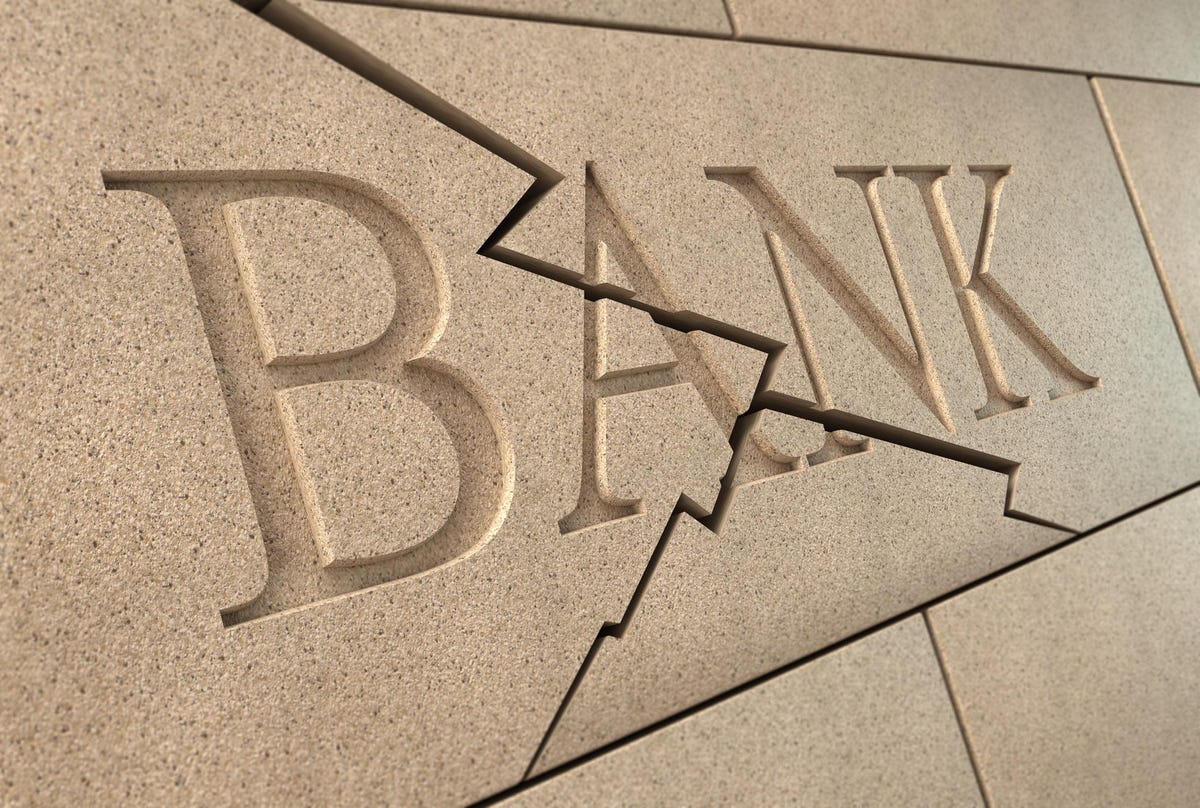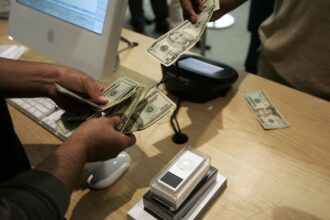The recent bank crisis stemmed from the loss of confidence in the banking system following the sudden collapse and seizure of Silicon Valley Bank (SIVB
VB
Bank stocks have been hard hit, with the KBW Bank index down over 19% year-to-date. As measured by the KBW Regional Bank index, smaller bank stocks declined over 20% year-to-date. Both large and regional bank prices underperformed the broader market again this week.
Credit default swap (CDS) prices are less well-known but available in real-time. In simple terms, CDS functions as an insurance policy that investors can purchase that pays off in the event of a borrower’s default. A higher price of a CDS reflects a more significant probability of default of the borrower. CDS prices for four of the U.S.’s global systemically important banks (G-SIBs) rose but remained below the highest levels of this crisis.
A straightforward way to measure the stress in the U.S. banking system is the magnitude of bank support provided by the Federal Reserve via various facilities. The most common is the discount window, which banks generally avoid, but the facility can provide emergency liquidity. In addition, following the collapse of Silicon Valley Bank, the Federal Reserve announced a new facility to help banks meet withdrawal requests from depositors and restore confidence. The Bank Term Funding Program (BTFP) allows banks to borrow up the face value of any government bonds held in the bank’s portfolio at a very reasonable rate. The Paycheck Protection Program (PPP) facility was created in 2020 to provide support during the pandemic. Other credit is the support of the bridge banks, operated by the Federal Deposit Insurance Corporation (FDIC) until they can be sold or liquidated.
With the seizure of Silicon Valley Bank and Signature Bank, discount window and bridge bank credit usage soared. This week, the use of the Fed bank facilities was driven by a decline in discount window borrowing. Part of the reduction in discount window usage was likely a shift to borrowing from the BTFP. In addition, the credit used by the bridge banks fell as the FDIC made some headway in winding down the failed banks. Overall, the reduction in Fed bank lending indicates that the rapid spread of the banking crisis has been arrested for now.
Bank deposit outflows stopped, and deposits grew slightly after the large outflows in the previous weeks. Notably, the 25 largest banks, which include many midsize regional banks, gained more deposits than the smaller banks, a trend that probably should be expected.
The previous week’s deposit outflows from small banks were revised to $47.6 billion from $1 billion, but a $25.8 inflow was reported this week. It will be worth noting if this deposit increase is revised away since all the revisions for the small banks have been going in that direction.
Cash has continued flowing into government money market funds, which confirms the pressure on deposits to leave the banking system. Notably, the pace of inflows into government money market funds has moderated since the apex of the banking crisis. This movement, also known as “cash sorting,” reflects savers reaching for higher yields while avoiding the credit risk at banks. Cash sorting started before the crisis began but seems likely to continue while short-term U.S. Treasury yields exceed the interest rates banks pay depositors.
Banks continued to make loans despite the crisis, but the pace dropped sharply this week. Loan growth should be expected to slow if banks are forced to hoard extra liquidity to bolster their defenses against possible additional deposit flight and increased loan losses. Notably, this week, the first signs of a potential credit crunch in commercial real estate (CRE) lending appeared. Small bank lending in the CRE sector fell, and the previous week’s loan totals were revised sharply lower to show the lending reduction. Smaller banks are the leading provider of commercial real estate loans, so that sector could face less credit availability. Again, it will be worth noting if this week’s loan reduction is revised even lower since all the revisions for the small banks have been going in that direction.
In summary, the U.S. banking system continued stabilizing from the extremes of the crisis. On a particularly positive note, bank deposit outflows stopped, and deposits grew slightly after the large deposit flight in the previous two weeks. While the severity of the banking crisis is receding, the real economic impacts are beginning to be seen. Loans from smaller banks have contracted for two weeks in a row, and the future availability of commercial real estate loans seems likely to be impacted. All other things being equal, a restriction in the availability of bank credit makes a U.S. recession more likely in 2023.
Read the full article here










